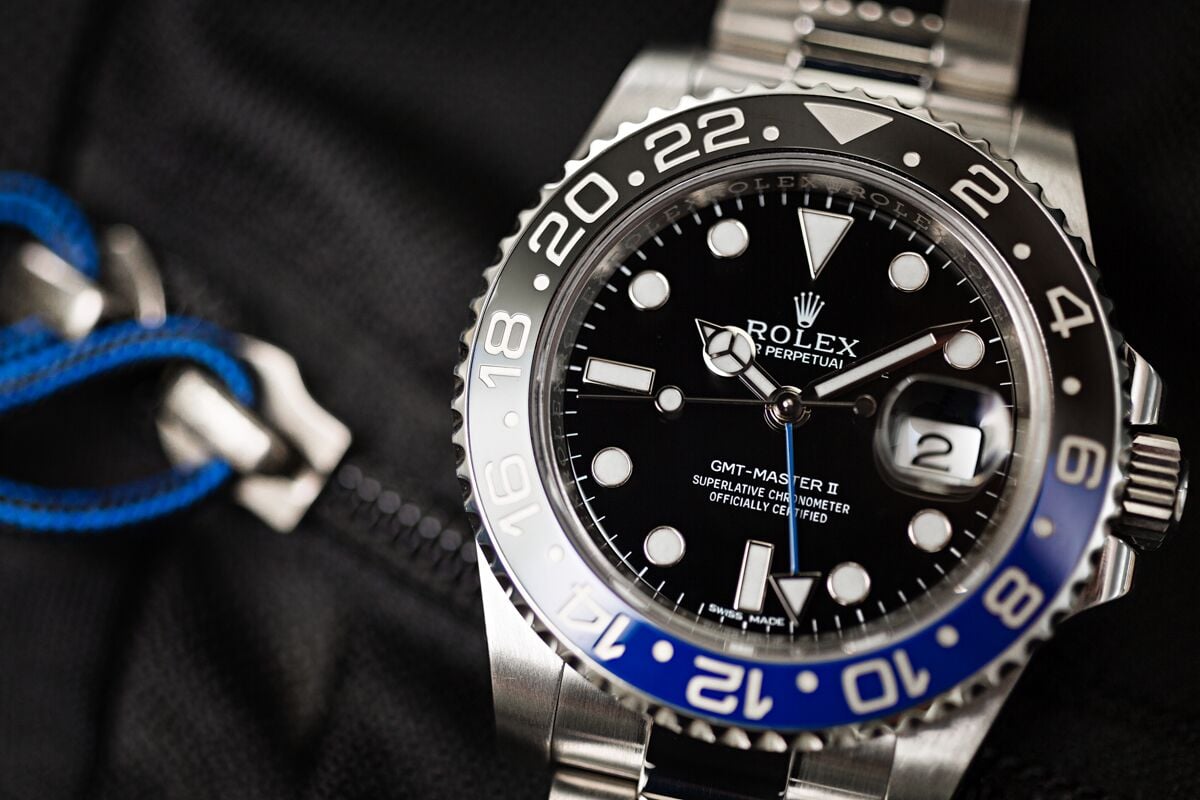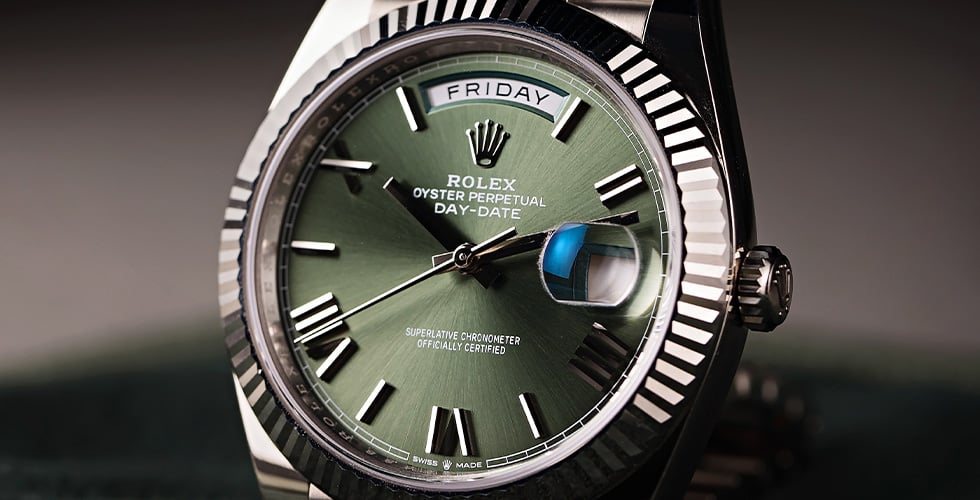Choosing between the Rolex GMT-Master II and the Rolex Submariner is all about your lifestyle and priorities. The Submariner is the ultimate diver’s watch, a robust and timeless classic, while the GMT-Master II is the perfect companion for the modern traveler, complete with an additional time zone. This article will break down the differences between each, including their history, features, aesthetics, and value, to help you make an informed decision.
Key Takeaways:
- Functionality: Submariner for diving and everyday timing vs. GMT-Master II for tracking multiple time zones
- Aesthetics: Key differences in bezel design, color options, popular nicknames, and bracelet types
- Comfort & Wearability: A look at the Glidelock vs. Easylink clasps and on-wrist feel
- Value & Exclusivity: An analysis of which model may be the better investment
- The Verdict: Helping you choose the Rolex that best suits your personal style and needs
While both of these iconic Rolex sport watches share a similar aesthetic and are crafted to the highest standards, they serve two entirely different niche markets. Let’s dive deep into what might make each of these models suitable for your wrist.
A Tale of Two Icons: The History of the Submariner & GMT-Master II
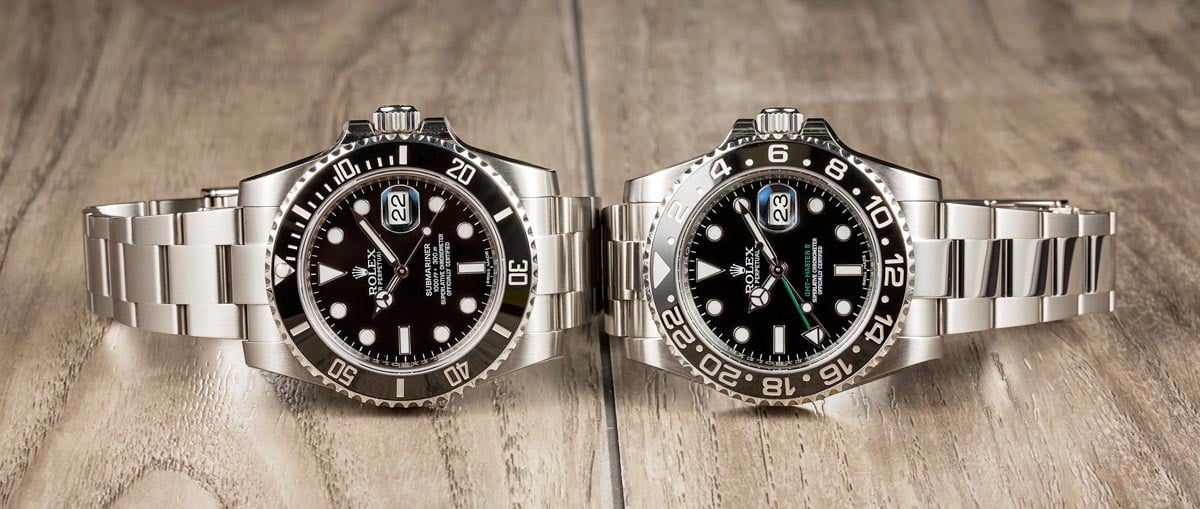
The Rolex Submariner emerged in the 1950s as a new sporty dive watch. This first Rolex Submariner was waterproof up to 100 meters. At the time, it set the standard for underwater timekeeping with its revolutionary waterproof case and handy 60-minute bezel. The Submariner’s connection to the world of diving runs quite deep, from its early adoption by naval forces, such as the Rolex Milsub, to its presence on the wrists of legendary oceanographers like Jacques Cousteau. What started as a serious tool for divers has, over the decades, grown into a true luxury sports icon. Today, it’s worn by far more than just professionals in the water, yet it still holds onto its roots as the ultimate underwater companion.
As mentioned in our Rolex GMT-Master II review, this model was born from a collaboration with Pan American World Airways in the 1950s, destined as a tool for pilots who needed to track multiple time zones during long-haul flights. The additional time zone, featuring a 24-hour hand and bidirectional bezel, revolutionized how people kept track of time while traveling from place to place. The watch has gained legendary status over the years through iterations, such as the original red and blue “Rolex Pepsi” model. It has since become the go-to watch for jet-setters, business travelers, and anyone who values sophisticated complications.
Rolex GMT Master 2 vs Submariner: A Head-to-Head Comparison
| Feature | Rolex Submariner | Rolex GMT-Master II |
| Primary Function | Diver’s Watch | Traveler’s Watch |
| Water Resistance | 300m (1,000 ft) | 100m (330 ft) |
| Bezel | Unidirectional, 60-minute scale | Bidirectional, 24-hour scale |
| Movement | Calibre 3230/3235 | Calibre 3285 |
| Bracelet Clasp | Glidelock System | Easylink Comfort Extension |
| Case Size | 41mm | 40mm |
| Dial | Cleaner, three hands | Four hands (including the GMT hand) |
| Bracelet Options | 3-link Oyster bracelet | 3-link Oyster bracelet or 5-link Jubilee bracelet |
Key Differences Explored: Submariner vs GMT II
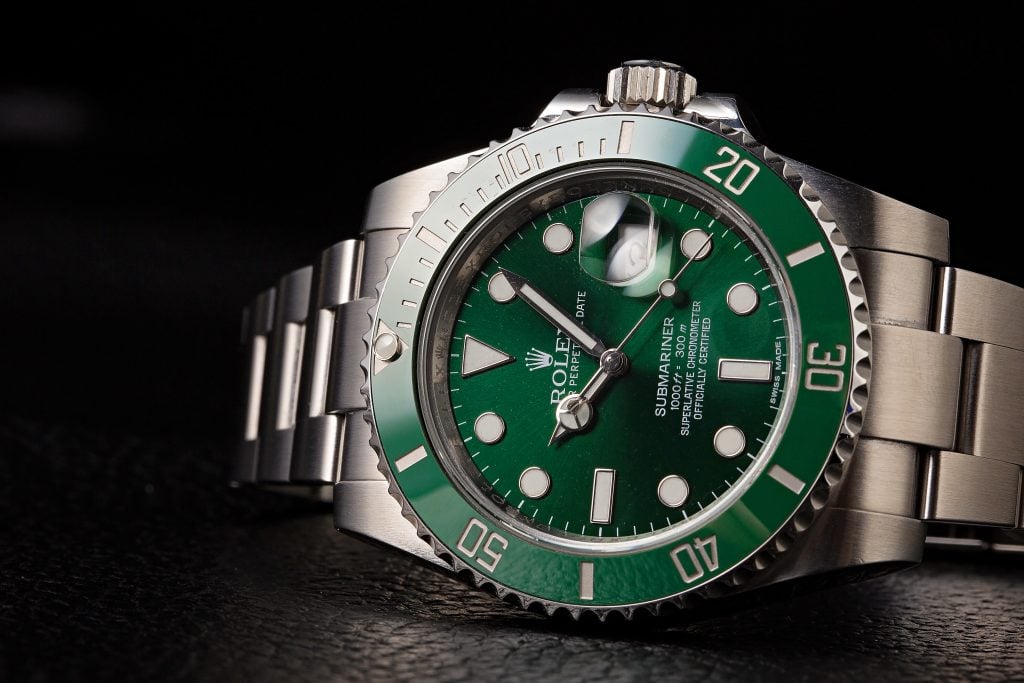
Functionality: A Diver’s Tool vs. A Traveler’s Companion
To understand the differences between each model, we must first consider its intended purpose. For starters, the Submariner features a unidirectional bezel developed as a safety measure for divers. It prevents accidental over-rotation, which could lead to miscalculating the wearer’s remaining air supply. On the other hand, the GMT-Master II has a bidirectional bezel that the wearer can rotate in either direction. The 24-hour hand and bezel allow the wearer to track home and local time, making it a convenient tool for international travel.
Possible applications:
- Submariner: Timing dives, parking meters, cooking, and other everyday tasks
- GMT-Master II: Tracking your home time while traveling, keeping up with international business colleagues, or for those who simply love the complication
Aesthetics and Design: Rolex Submariner vs GMT Master 2
That brings us to aesthetics. The different functionalities of each watch ultimately give them their own unique look, despite sharing a similar sporty elegance. Let’s break it down:
Key Aesthetic Differences:
- The Bezel: Submariner’s classic single-color bezel (black, green, blue) vs. the GMT-Master II’s iconic bi-color options for AM/PM indication
- The Bracelet: The Submariner’s rugged Oyster bracelet vs. the GMT-Master II’s dressier look with the option of either the Oyster or Jubilee bracelet
- The Dial: The Submariner’s clean, symmetrical dial vs. the “busier” dial of the GMT-Master II with its extra hand
Exploring the Collections: Popular Models, References, and Nicknames
While the Submariner and GMT-Master II are two distinct watch families, the choice often comes down to a specific model within their respective lineups. Both collections have a variety of highly coveted references, many of which have earned some quirky Rolex nicknames from the enthusiast community. Here are some of the most popular variations you’ll find.
The Submariner Family: From Classic to Colorful
- The Classic (No-Date/Date): The original tool watch in its purest form. Timeless black dial and bezel. (e.g., Ref. 124060, 126610LN)
- Rolex Kermit: The first green bezel Submariner, featuring a black dial and aluminum bezel. (Ref. 16610LV)
- Rolex Hulk: A fan favorite with a vibrant green dial and matching green ceramic bezel. (Ref. 116610LV)
- Rolex Starbucks: The modern successor to the Kermit, with a green ceramic bezel and black dial. (Ref. 126610LV)
- Rolex Bluesy: The iconic two-tone Submariner in steel and yellow gold with a brilliant blue dial and bezel. (Ref. 126613LB)
- Rolex Smurf: A weighty model crafted entirely from white gold with a blue dial and bezel. (Ref. 116619LB)
The GMT-Master II Family: The Cosmopolitan Icons
- Rolex Pepsi: The original and most famous, with its iconic red and blue bezel. (e.g., Ref. 126710BLRO)
- Rolex Coke: A classic variation featuring a red and black bezel. (e.g., Ref. 16710)
- Rolex Batman: The first ceramic bezel in blue and black, introduced on an Oyster bracelet. (e.g., Ref. 116710BLNR)
- Rolex Batgirl: The same blue and black ceramic bezel, but offered on the more intricate Jubilee bracelet. (Ref. 126710BLNR)
- Bruce Wayne: The 2024 nickname for the gray and black bezel GMT, reflecting a more understated aesthetic. (Ref. 126710GRNR)
- Rolex Root Beer: A distinctive model in two-tone Everose gold and steel with a black and brown bezel. (e.g., Ref. 126711CHNR)
Comfort and Wearability: GMT 2 vs Submariner on the Wrist
The differences between the two become more obvious when you actually wear the Submariner and GMT Master II day in and day out. Both are comfortable on the wrist, but each has its own distinct personality, with subtle design choices that make one better suited for certain lifestyles or preferences than the other.
Comfort Factors:
- The Clasp: The Submariner’s Glidelock system offers up to 20mm of tool-free adjustment, making it ideal for wearing over diving suits or accommodating the wrist as it fluctuates throughout the day. The GMT-Master II’s Easylink provides 5mm of quick adjustment, perfect for fine-tuning comfort during temperature changes or long flights.
- Case Profile: The Submariner features a slightly thicker caseback due to its superior water resistance rating, which affects how the watch sits on the wrist compared to the GMT-Master II’s more streamlined profile.
Investment Value: Does the Rolex GMT Master 2 Hold Value Better Than the Submariner?
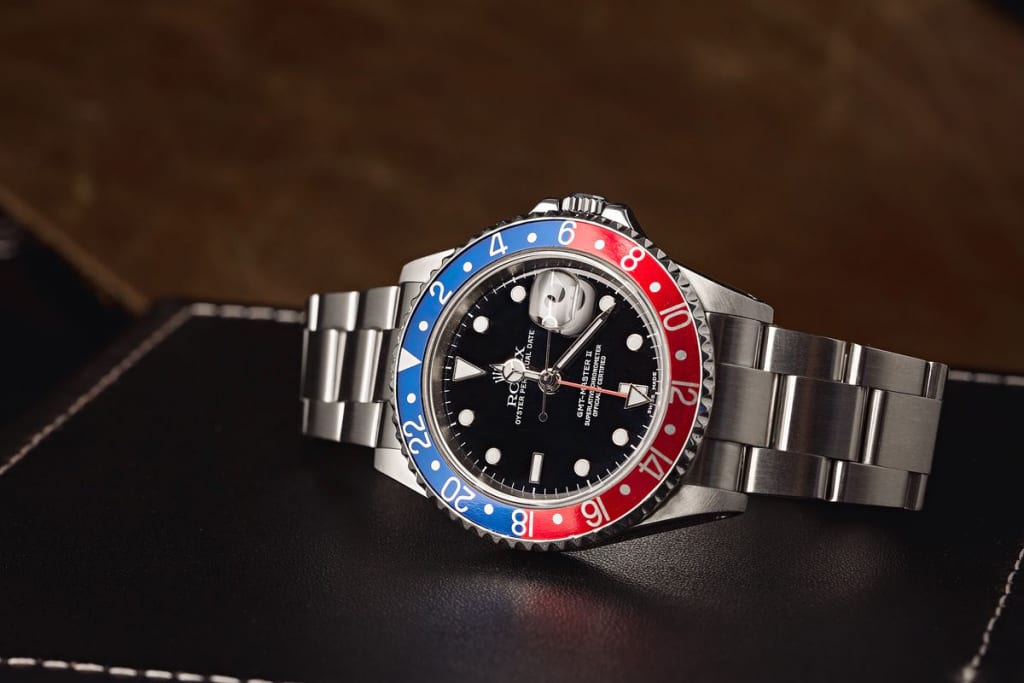
Both the GMT-Master II and Submariner represent excellent investments as luxury watches, each with distinct advantages for collectors and investors. The GMT-Master II, particularly in sought-after colorways like the Pepsi or Batman, has experienced significant appreciation in recent years, driven by limited production and high demand from collectors seeking bi-color bezels.
The Submariner, however, stands as the “blue chip” investment of the Rolex world, with a decades-long history of steady appreciation and consistent market demand. Its status as the archetypal luxury sports watch means it will always have a broad appeal across different demographics and markets.
The “better” investment, so to speak, depends on your goals and how much risk you’re willing to take on. If you’re chasing bigger short-term gains, certain GMT-Master II models may catch your eye. But if long-term stability is more of a priority to you, the Submariner’s track record and worldwide recognition make it a smart choice.
Clearing Up the Confusion: Common Submariner & GMT-Master II Myths
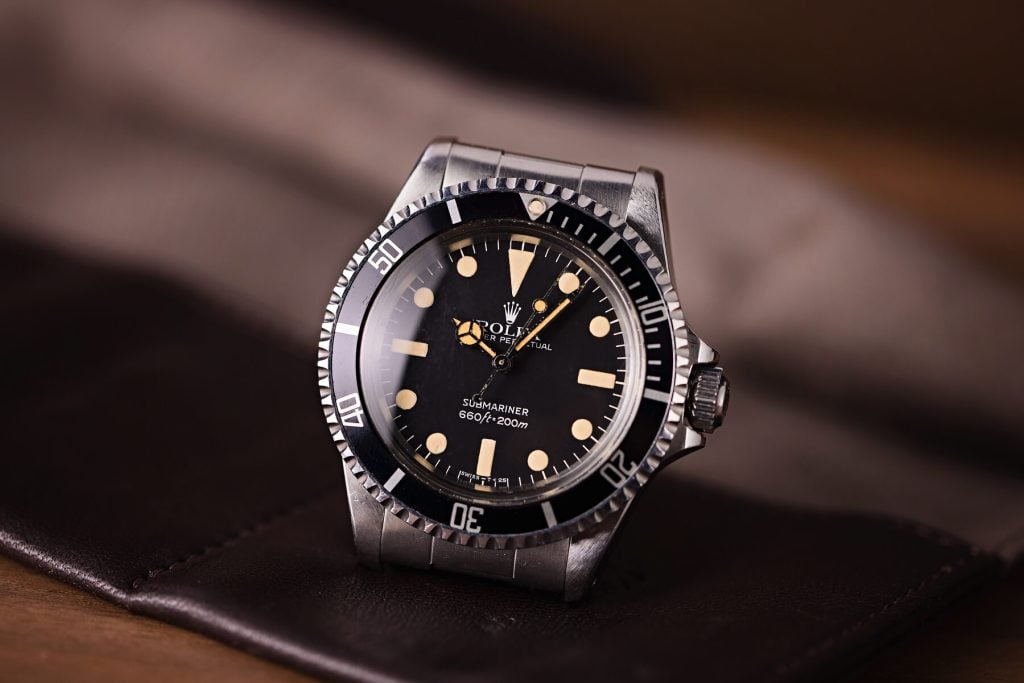
In such a massive market, there’s bound to be a few common myths and points of confusion. Let’s clear up some of the most frequent misconceptions about the Submariner and GMT-Master II.
The Myth of the “Rolex Submariner Pepsi”
One of the most common searches among new collectors is for the “Rolex Submariner Pepsi.” While the desire for a diver with that iconic red and blue bezel is understandable, the “Rolex Pepsi” bezel is exclusively a feature of the GMT-Master collection, symbolizing its day/night indication for pilots. If you love the red and blue colorway, the watch you are looking for is the legendary GMT-Master II “Pepsi.”
The Glidelock Clasp Confusion
Many buyers wish for the Submariner’s incredible Glidelock clasp on the GMT-Master II. However, these clasps are purpose-built and remain exclusive to their respective models. The Submariner gets the Glidelock for on-the-fly adjustments over a wetsuit, while the GMT-Master II uses the slimmer Easylink clasp, which provides a simple 5mm extension for everyday wear.
Are All Bi-Color Bezels a “Pepsi?”
The “Pepsi” is the most famous bi-color bezel, but it’s not the only one. The GMT-Master II collection is famous for its variety of two-tone combinations, each with its own nickname. The list includes the black and red “Coke,” the black and blue “Batman,” the brown and black “Root Beer,” the black and green “Sprite,” and the new gray and black “Bruce Wayne.”
The Final Verdict: Choosing Between Two Rolex Legends
There truly is no wrong choice when it comes to the Submariner and GMT Master II. The Submariner is the quintessential tool watch turned status symbol, with unmatched versatility, superior water resistance, and a design so perfect that it has remained virtually unchanged for decades. The GMT-Master II is a sophisticated traveler’s watch, pairing practical multi-timezone functionality with eye-catching cosmopolitan aesthetics.
At Bob’s Watches, we have a deep appreciation for both of these iconic models. Whether you’re drawn to the rugged simplicity of the Submariner or the sophisticated functionality of the GMT-Master II, we can help you find the perfect timepiece. Explore our vast collection of certified pre-owned Rolex watches and secure your grail.

